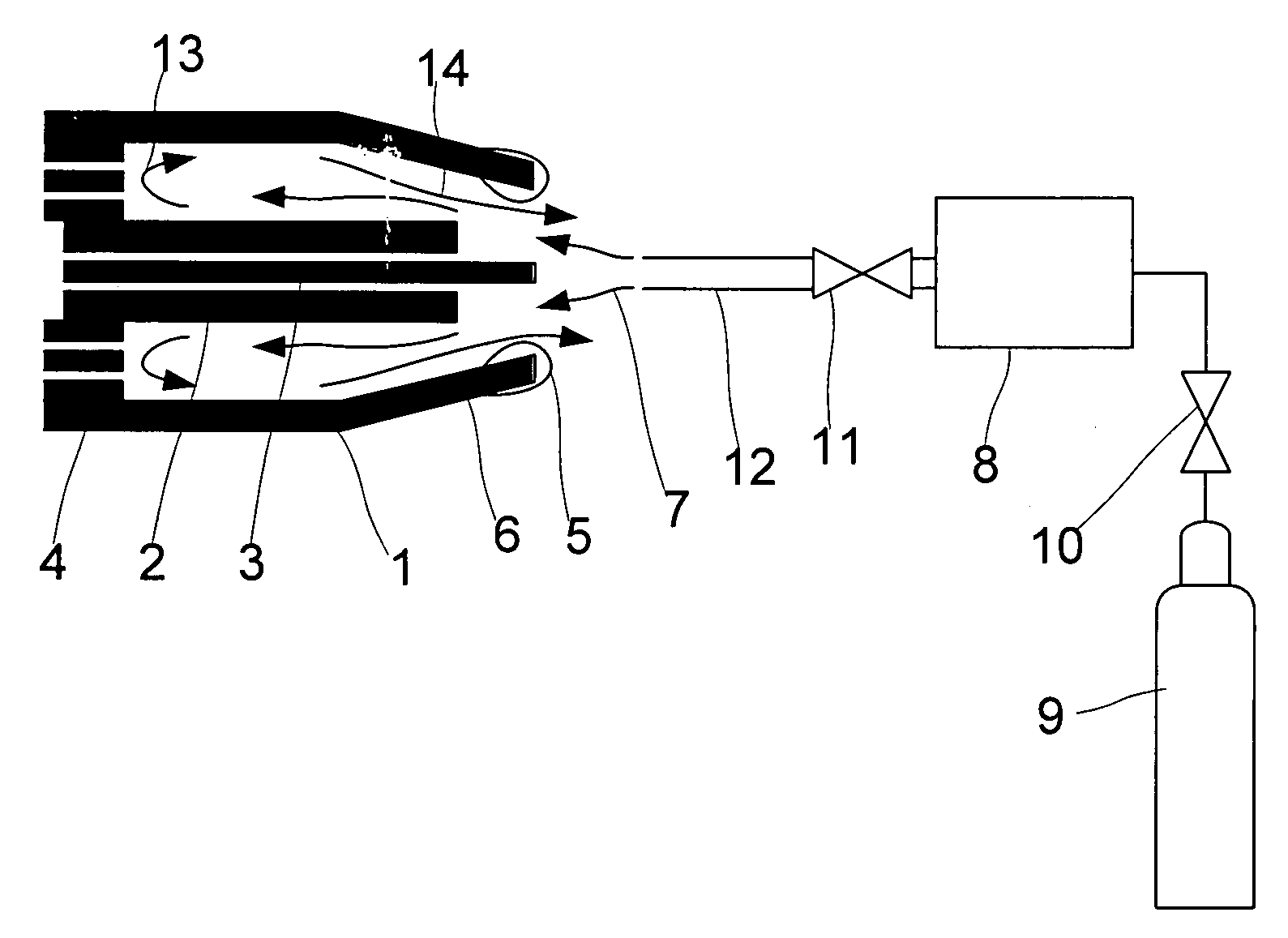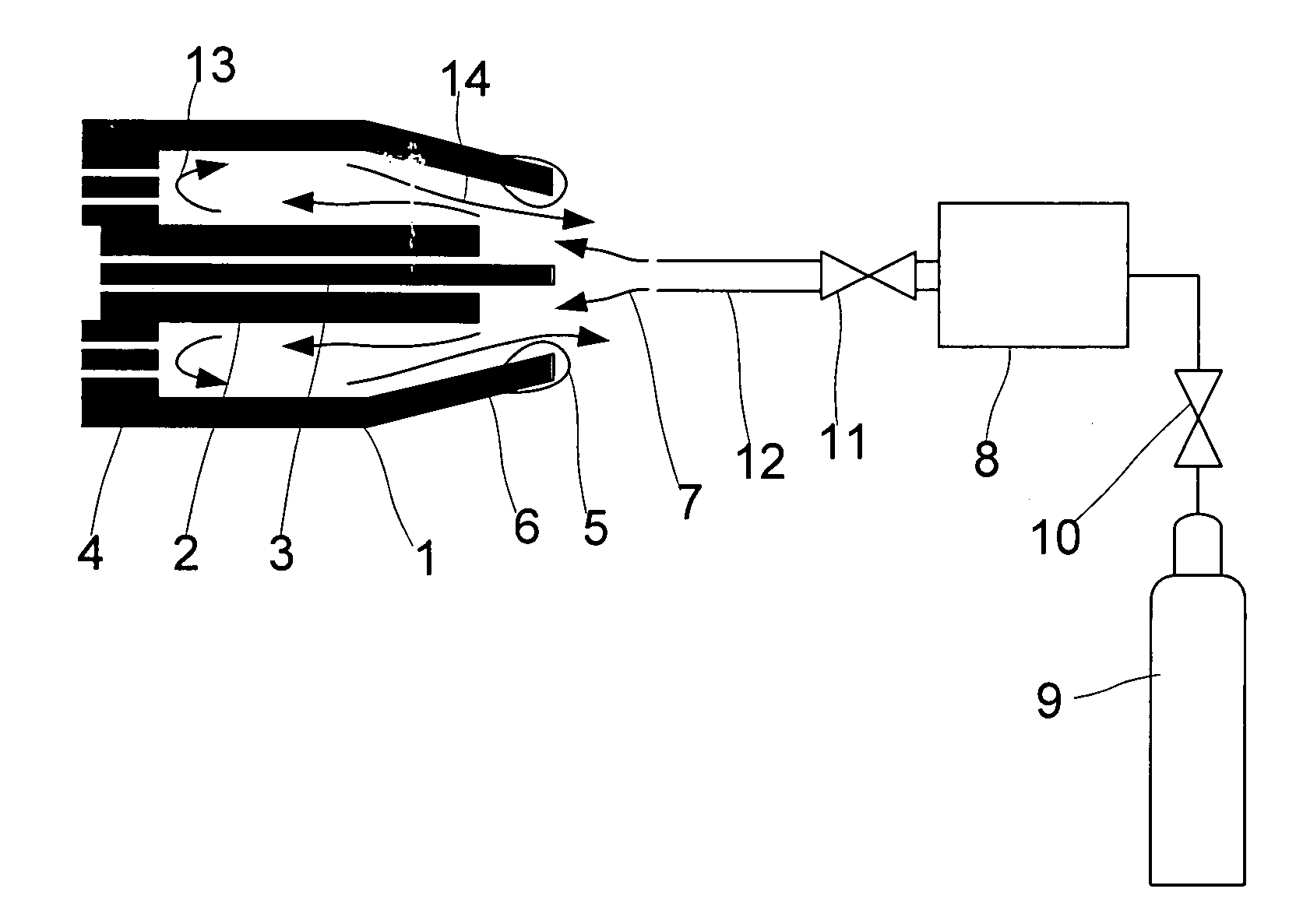Method for cleaning of welding torches
a welding torch and cleaning technology, applied in the field of welding torches cleaning, can solve the problems of reducing the outlet orifice, disturbing the flow of shielding gas, and reducing the gas shield with welding defects
- Summary
- Abstract
- Description
- Claims
- Application Information
AI Technical Summary
Benefits of technology
Problems solved by technology
Method used
Image
Examples
Embodiment Construction
[0048]The welding torch comprises a shielding gas nozzle 1, a contact tip 2 with a welding wire or electrode 3. Through shielding gas inlets 4 a shielding gas may be introduced into the shielding gas nozzle 1 in order to create a shielding gas atmosphere during welding.
[0049]As described in the introductory part of the specification, during welding spatter 5 will be formed and adhere to the tip 6 of gas nozzle 1. In order to remove the adhered particles (spatter) 5 a high speed gas stream 7 with a short duration is directed to the welding torch.
[0050]A reservoir 8 having a volume of for example 0.05 liter is filled with a gas mixture of argon and carbon dioxide from a gas cylinder 9 at a pressure of 55 bar. Valves 10 and 11 are closed. In order to have the speed of the cleaning gas jet 7 as high as possible, valve 11 is opened very fast. The cleaning gas stored in reservoir 8 enters cleaning gas nozzle 12 and is then blown into shielding gas nozzle 1. The shockwave generated by the ...
PUM
 Login to View More
Login to View More Abstract
Description
Claims
Application Information
 Login to View More
Login to View More - R&D
- Intellectual Property
- Life Sciences
- Materials
- Tech Scout
- Unparalleled Data Quality
- Higher Quality Content
- 60% Fewer Hallucinations
Browse by: Latest US Patents, China's latest patents, Technical Efficacy Thesaurus, Application Domain, Technology Topic, Popular Technical Reports.
© 2025 PatSnap. All rights reserved.Legal|Privacy policy|Modern Slavery Act Transparency Statement|Sitemap|About US| Contact US: help@patsnap.com


